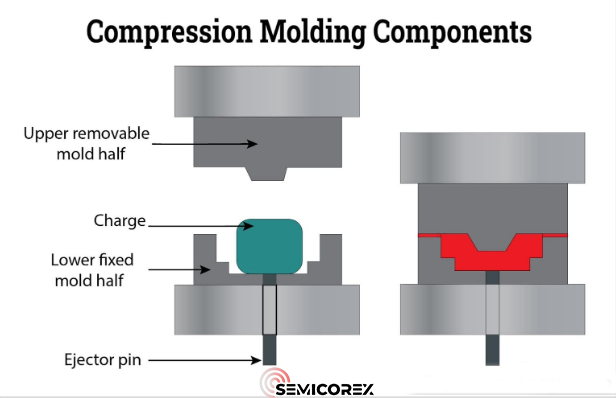
- English
- Español
- Português
- русский
- Français
- 日本語
- Deutsch
- tiếng Việt
- Italiano
- Nederlands
- ภาษาไทย
- Polski
- 한국어
- Svenska
- magyar
- Malay
- বাংলা ভাষার
- Dansk
- Suomi
- हिन्दी
- Pilipino
- Türkçe
- Gaeilge
- العربية
- Indonesia
- Norsk
- تمل
- český
- ελληνικά
- український
- Javanese
- فارسی
- தமிழ்
- తెలుగు
- नेपाली
- Burmese
- български
- ລາວ
- Latine
- Қазақша
- Euskal
- Azərbaycan
- Slovenský jazyk
- Македонски
- Lietuvos
- Eesti Keel
- Română
- Slovenski
- मराठी
- Srpski језик
How to Manufacture Graphite Rods?
2023-09-18
Compression molding, isostatic pressing, and rod extrusion are the three most common methods for producing graphite rods, similar to those used for creating graphite tubes.
Compression Molding
Compression molding is a process used for forming materials into a specific shape. In this process, the material is first preheated and then placed in an open, heated mold. The mold is then closed and pressurized by a plug member as the material softens. Due to the combination of pressure and heat, the material conforms to the shape of the mold. The material is then left in the mold until it cures, taking on the desired shape.

Rod Extrusion
The process of rod extrusion is a standard technique used for molding. It involves heating graphite stock along with any required additions in a hopper until it melts and becomes liquid. The molten stock is then forced through a die in the shape of a tube. The stock takes on the size and shape of the die after it cools down. Once it has sufficiently cooled, it is released from the die as a solid shape.
Isostatic Pressing
Isostatic pressing is a forming method that applies pressure uniformly from all directions. The process involves placing the graphite substance within a high-pressure containment vessel and pressurizing it using an inert gas, such as argon. Once the graphite is inside, the vessel is heated, which increases the pressure and causes the graphite to form in this manner.
Hot Isostatic Pressing (HIP)
Hot isostatic pressing (HIP) is a manufacturing technique that allows for the consolidation of powder and the simultaneous completion of the two-step process of traditional powder metallurgy forming and sintering. This technique is also used for eliminating casting defects, diffusion bonding of workpieces, and producing complex-shaped parts. Inert gases such as argon and ammonia are commonly used as pressure transfer media, and the components are packaged in metal or glass. The process typically operates at temperatures ranging between 1000 to 2200°C, while the working pressure is typically between 100 to 200 MPa.
Cold Isostatic Pressing (CIP)
Cold isostatic pressing is a cost-effective method of creating parts when the high cost of pressing dies cannot be justified, or when extremely big or complex compacts are required. This process is widely used commercially for pressing a wide range of powders, including metals, ceramics, polymers and composites, using compacting pressures that range from less than 5,000 psi to greater than 100,000 psi (34.5 - 690 MPa). The powders are compacted in elastomeric molds either using a wet or dry bag process.




